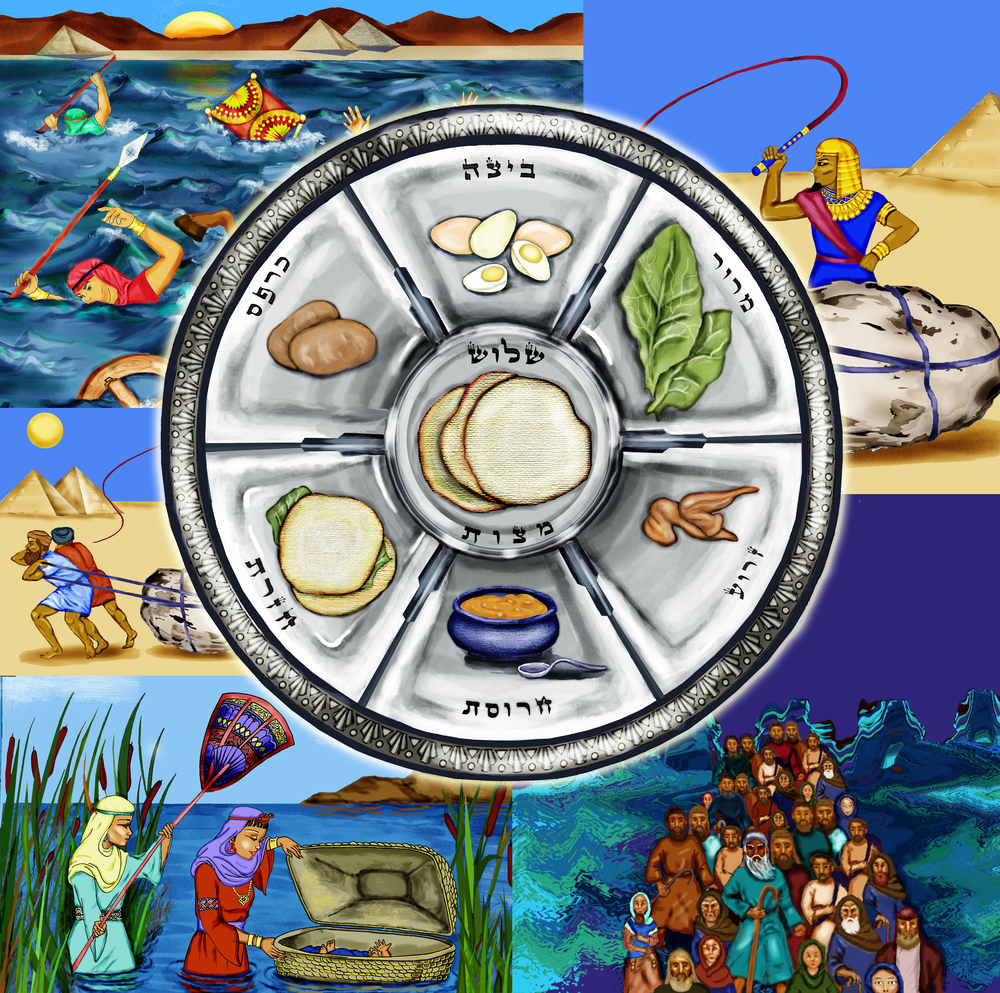Ever since Moses led the children of Israel out of Egypt, each year the Jews have remembered God’s divine deliverance of their people with a special meal: the Passover Seder. (Seder simply means meal in Hebrew.) Families gather together, after cleansing their house of all chametz (yeast), and recite prayers and songs as they eat the same foods their ancestors ate on that fateful night over 3,000 years ago.
So what do the seven symbolic foods on the Seder plate mean? Here they are, in the order they are eaten during the meal.
Karpas: a vegetable, such as parsley or potato, that is dipped in salt water to represent the tears of the enslaved Israelites.
Matzah: a cracker-like unleavened bread, which symbolizes both the haste of the Israelites in leaving Egypt and the manna provided in the desert.
Maror: a bitter herb, usually horseradish, as a reminder of life as a slave in Egypt that is dipped in charoset.
Charoset: a sweet paste of fruits and nuts, which symbolizes the brick mortar used by the Jews to build the monuments of Egypt.
Chazaret: a second bitter herb, often romaine lettuce, which is eaten as a sandwich between pieces of matzah.
Beitzah: a hard-boiled egg, which represents the Passover sacrifice that would have been offered in the Temple.
Zero’ah: the boiled bone of an animal, traditionally lamb (but also goat or chicken), to represent the Passover sacrifice.
For a more detailed explanation of the Passover Seder, click here.


